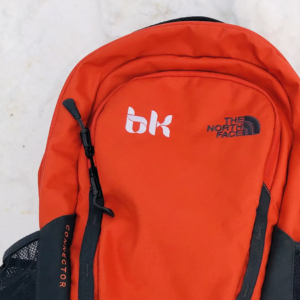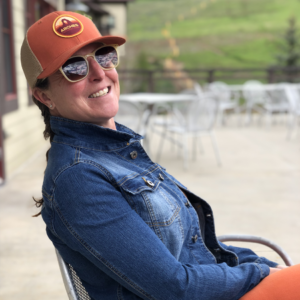How to Make Better Videos for Travel Marketing (And Why You Need To)
As one of the top Colorado marketing companies, we believe in the power of marketing your travel business with video. It’s increasingly becoming the number one way to reach people on the internet.

Over 230 million Americans watch video online. YouTube alone has over 1.3 billion users. And over on Facebook, half a billion people are clicking “Like” on videos every single day.
Not only does video give you an opportunity to put a friendly face on your brand, it’s also the best way to show off your product or service in action.
This is essential for travel marketing, because most potential clients are looking to experience something new. That means they don’t know what to expect from your offerings — unless you show them.
A video can tell a story and vividly illustrate what the viewer is missing out on — from hiking trails and river kayaking to luxury beach resorts and vintage European wine cellars.
And research shows that not only can video help convert potential customers (90% of watchers say videos help them make a final decision about a product), but it also increases your likelihood of reaching more new people.
That’s because 92% of the time, watchers share the videos they love with others.
A combination of text, images, special offers, and video can help you turn interested parties into loyal return customers. But video is only effective if you anticipate the customer’s needs and address them at the right point in your sales funnel.
With that in mind, here are 5 things to consider when utilizing video in a marketing campaign.
1. Use the Right Video in the Right Place
Before you sit down to storyboard the perfect marketing video, think about where it’ll be shown, and its purpose in the sales funnel.
Is this video focused on social media users? Is it going to be embedded in an email blast to existing subscribers? Is it the face of your company on your website?
Answering these questions is essential before you start. For example, a video for Instagram should fit within the platform’s time length limit. A more lo-fi selfie style video with viral-ready content could be effective on Twitter where people engage most with very personal and emotional content.
On Facebook, you should consider video that people will want to share on their own newsfeeds. And remember that when it’s shared, it’s likely going to be seen by people who know nothing about your company.
You don’t need to sell those kind of a viewers on a trip yet. You just need to leave them entertained and with the chance to remember the name of your company.
On the other hand, if your video is going out to existing email subscribers, then you’re talking to people that already know a bit about what you do. In this case, video should be highly produced, and “sell” viewers more directly on a specific experience.
Lastly, if the video is going to be posted to YouTube or your website where they’ll represent your brand, you might want a high-quality production that presents your company as a legitimate authority on whatever kind of travel you specialize in.
2. Shorter is Better
Our attention spans are very short online.
Sorry, what were we talking about?
Oh yeah — there’s endless content to compete with online. And users can always scroll to the next thing the second they’re bored.
The latest studies show that you have 10 seconds to pique a viewer’s interest before you risk losing them.
Shoot for a compelling start with your video. If you offer river cruises in Egypt and are making a video for Facebook, maybe your video starts with “Here are the 5 things everyone gets wrong about Egypt’s Pyramids.”
Anyone who has an interest in Egypt will probably keep watching. And if the facts are surprising, they might even share your video. Make sure your company logo is in the video the entire time so your brand is front and center.
If you’re doing a more direct sell, then make sure the first 10 seconds highlight the value of the deal. For example: “A Caribbean beach vacation for under $500? Yep, it’s possible. Here’s how.”
Viewers who are already in the decision phase are likely to watch til the end, and then look for a way to take action. Make sure you offer a way to contact you in the video description, or provide a link where viewers can get a quote.
3. Create an Emotional Narrative
One of the most powerful benefits of video is its unique ability to appeal to the viewer’s emotion.
A video can make people laugh, cry, and desire. It can make them nostalgic for the past, and hopeful for the future.
How? Through faces, places, and music. For travel marketing, this could come in the form of showing real customers having their mind blown when they experience what you offer — whether it’s a helicopter ride over the Grand Canyon or a hotel made entirely of ice.
Instead of making a boring video panning across a deluxe suite in a hotel, make sure your videos are telling a human story. Show a family jumping on the bed (unless it’s made of ice), and add music to elevate the mood.
When you’re trying to connect with family-oriented travel customers, a slow-motion video of children laughing with their parents is much more powerful than just a list of perks.
People watching your videos want to feel good. And you want them to associate those good feelings with what you have to offer. Make sure the story your videos are telling elicit a positive and exciting mood from start to finish.
4. Up Your SEO
Search engine optimization (SEO) is one of our top priorities when we’re working to boost a client’s online business. It’s how people find your company amongst the competition when searching online.
And did you know video can boost your site’s SEO ranking?
That’s because search engines consider quality content when ranking sites. So having any video at all is a good start to upping your SEO.
To get even more SEO bang for your video buck, be sure to follow these guidelines:
- The title says it all: Craft a keyword-friendly title and description.
- Choose a thumbnail that clearly shows what people can expect to see in the video.
- Include a text transcript as captions in your video — this lets people watch without sound, makes your video accessible to people with hearing loss, and boosts SEO by providing indexable text for search engines.
- Make your video the focus of the page you want to improve SEO for (put it front and center).
- Only embed your video on the one page you want people to find (don’t compete with yourself by embedding the video in multiple places on your website).
As your video gets more attention and people share it or link to it, your SEO will continue to rise thanks to link-building that helps establish you as a legitimate online resource.
5. Dig into the Stats
If you’re going to invest in video, it’d be a shame to drop the ball when it comes to analyzing the results.
That’s because video is a marketing analysts’ dream — looking at your video stats can tell you novels about your audience.
For example, with YouTube you can easily find out the following about your viewers:
- How many users watched the video
- How long the average view was
- When users stopped watching (helpful for editing that video and for improving your next video)
- How users find your video
- Demographics (age, gender, location, interests, etc.)
- Who is sharing what
Plus, when you post your video on social media, you can track views, shares, likes, and comments to get a better idea of what’s working and what’s bombing.
Making a great video and posting it online is all well and good, but ignoring the numbers is a missed opportunity for improved conversions and audience targeting down the road.
Seeing Is Believing
Travel marketing is one of BKMedia Group’s specialties. We’ve launched and managed successful campaigns for African safari camps, National Parks guided hiking trips, and European river cruises.
Working with our clients to script and produce effective marketing videos is just one facet of how we approach digital marketing for travel.
Our Denver digital marketing team includes experts on web design and development, SEO, Facebook Dynamic Ads, lead generation, and analytics.
Whether you just need help with one aspect of your digital marketing strategy or are looking for a fresh start, we’ve got the experience to help you reach new customers and bring back old ones.
Learn more about our approach to digital marketing for the travel industry »
Other Articles
Navigating the Off-Season: Marketing Strategies for Outdoor, Overlanding, and Camping Brands
The world of outdoor adventure, overlanding, and camping is fueled by the passion for exploration, nature, and the thrill of...
Mastering Black Friday Cyber Monday Campaigns: Strategies for Outdoor Retail Brands
Black Friday Cyber Monday (BFCM) has become a pivotal period for businesses across various industries, and the outdoor retail sector...
Why Outdoor Retailers Must Plan Black Friday Cyber Monday Campaigns Well in Advance
For online retailers in the outdoor industry, the Black Friday Cyber Monday (BFCM) weekend represents a significant sales opportunity. However,...



